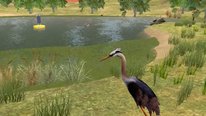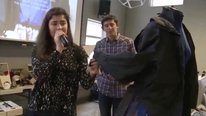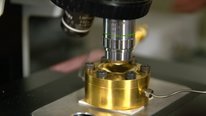- Fengfeng Ke
- http://myweb.fsu.edu/fke/
- Associate Professor
- EXP: "Earthquake Rebuild" - Mathematical Thinking and Learning via Architectural Design and Modeling
- http://mileresearch.coe.fsu.edu/eRebuildWebold/
- Florida State University
- Danial Smith
- EXP: "Earthquake Rebuild" - Mathematical Thinking and Learning via Architectural Design and Modeling
- http://mileresearch.coe.fsu.edu/eRebuildWebold/
- Florida State University
Public Discussion
Continue the discussion of this presentation on the Multiplex. Go to Multiplex








Fengfeng Ke
Associate Professor
Welcome to our eRebuild project video showcase. Please let us know if you have any questions.
Cyrus Shaoul
This project looks fascinating. I was wondering if you have started to look at tracking student actions in the VR world. Have you considered what type of analytics you might want to look at?
Fengfeng Ke
Associate Professor
HI Cyrus,
Yes, we did track student gaming actions via game logs and mainly used Bayesian network for the game-based learning assessment. We are also exploring some other analytics methods, including decision tree random forest.
Cyrus Shaoul
That is fascinating. Thanks so much. If you have links to any research reports, please let me know.
Fengfeng Ke
Associate Professor
Sure! We have a research paper submitted. I will send you the link once it's in press.
Martin Storksdieck
Director and Professor
This reminds me of the excessive Minecraft my kid is playing. Can you share a little about the level of engagement kids exhibit for this game? ON an aside, it is eRebuild: what is the entry story into the game? What do the kids have to accomplish?
Fengfeng Ke
Associate Professor
The infield observation data demonstrated a high level of gaming engagement, but students differed in their cognitive and content engagement levels. The backdrop mission of the game is to rebuild a natural disaster damaged space to fulfill diverse design parameters or needs (e.g., size, location, shape, and direction). The task narrative differs in each level. The intermediate game goal involves completing each level of the design quest,and earning badges and credits (e.g., game scores in terms of the architectural design efficiency and structural soundness).
Martin Storksdieck
Director and Professor
Thank you for the explanation!
Jackie DeLisi
Research Scientist
This looks like an interesting way for students to learn basic architectural design. Can you say more about what students are learning as a result of using this game? Have you been able to link studens choices in the games to any outcomes?
Fengfeng Ke
Associate Professor
They (middle school students) are learning mathematical problem solving as a result of using this game. We have used the problem-solving oriented math knowledge tests to measure the targeted learning outcome and the evaluation studies demonstrated that playing E-Rebuild (versus the control, conventional condition) promoted the problem-solving test performance. We are still finalizing the in-game assessment model (using gaming log data and via the Bayesian network) and should be able to examine the association between in-game actions with the learning performance based on the finalized model.
Further posting is closed as the showcase has ended.